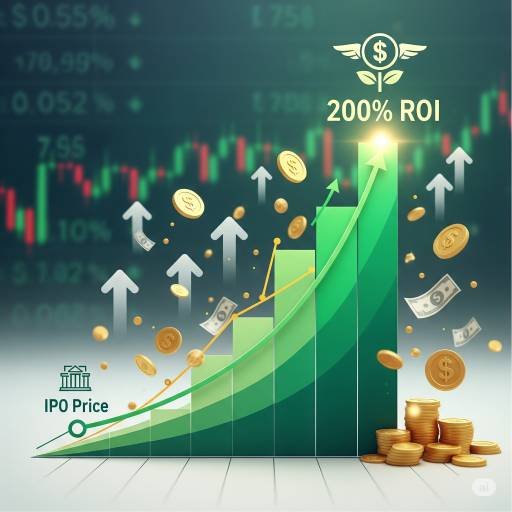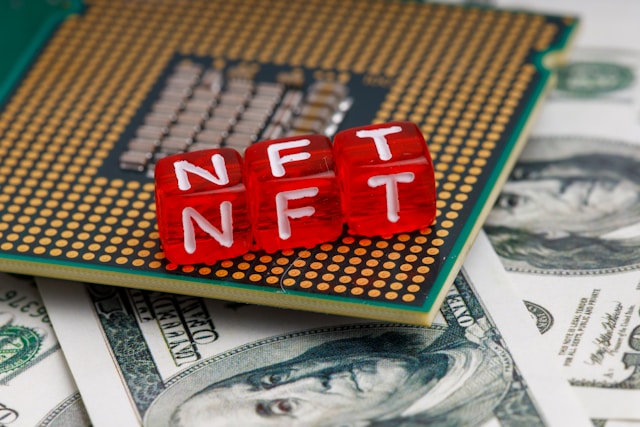
- August 12, 2025
- Personal Finance Advisor
- 0
An Initial Public Offering, or IPO, is one of the most exciting events in the money world. You see it in the news all the time. A popular private company finally decides to “go public.” Therefore, everyone gets a chance to own a piece of it. The IPO process can create vast wealth overnight. It turns founders and early staff into millionaires. This guide is here to explain it all for you.
This world can seem complex and out of reach. Many people think only big, rich backers can get in. However, that is no longer true today. The doors to IPO investing are opening up for all. Most importantly, you need to know what you are doing. An IPO can be a great chance. It can also be a very risky bet if you are not careful.
This is your map to the IPO landscape. We will break down what an Initial Public Offering is. We will look at why they happen and why they are so hyped. We will also cover the real risks you must know. So, get ready to learn how you can be part of the action. Let’s dive into the thrilling process of an IPO.

What Exactly is an Initial Public Offering (IPO)?
An Initial Public Offering is a major step for a private company. It is the very first time the company sells its shares to the general public. Before an IPO, a company is private. This means its ownership is held by a small group of people. For instance, this group includes founders, staff, and early backers. The IPO changes all of that in a big way.
Think of it like a private club throwing its doors open to everyone. The company works with big banks to decide on a share price. Then, it lists its shares on a public stock exchange, like the NYSE, NSE, BSE etc.
After that, anyone with a brokerage account can buy and sell its stock. Consequently, the company is now a public entity, owned by many.
The main reason for an Initial Public Offering is to raise a lot of money. The company sells new shares and gets a huge cash injection. It can use this money for many things. For example, it can fund new growth, pay off debt, or develop new items. It is a powerful way for a successful company to get to the next level.
The Big Appeal of an Initial Public Offering (IPO)
The excitement around an Initial Public Offering is easy to understand. For investors, it is a chance to get in on a company’s public journey from day one. You might be a long-time user of the company’s product. Therefore, you feel a connection to it. Owning a piece of a brand you love can be a great feeling. It makes you a part of its story.

The biggest draw for many is the chance for a first-day “pop.” This is when the stock price jumps up on the first day of trading. For example, a stock might have an IPO price of 20 dollars. It could then open for trading at 40 dollars or more. This instant gain is what creates so many headlines. However, this is never a sure thing.
For the company, an IPO brings more than just cash. Going public raises the company’s profile a lot. It gets a ton of media attention. This can be great for marketing and building its brand. In addition, having a public stock makes it easier to buy other companies or attract top talent with stock options. It is a sign that a company has truly made it.
The Hidden Risks of an Initial Public Offering (IPO)
While the hype is real, an Initial Public Offering comes with big risks. You must know these before you invest. The first-day “pop” can also be a first-day “drop.” There is no rule that says the stock must go up. Many IPOs have traded down on their first day. This leaves early public backers with an instant loss.
The hype itself can be a major risk. An IPO is a huge marketing event for a company. All the news and excitement can push the price up too high. You might be buying the stock at its most costly point. Therefore, you are paying a premium price driven by excitement, not by the company’s real value. This can lead to losses later on.
You also need to think about who is selling. In an IPO, early backers and insiders finally get a chance to cash out. There is often a “lock-up period” of a few months. During this time, they cannot sell their shares. But when that period ends, many of them will sell. This flood of new shares on the market can push the stock price down.
Your Guide to Investing in an Initial Public Offering (IPO)
So, how can a regular person like you invest in an Initial Public Offering? In the past, it was very hard. Big banks would give most of the shares to their biggest and richest clients. The small investor was usually left out. But the game is changing. New online brokers have made IPO access much more open.
Many modern brokerage apps now offer IPO investing. You can express your interest in an upcoming IPO through their app. You say how many shares you would like to buy at the IPO price. However, this does not mean you will get them.

Getting shares is called an “allocation.” If the IPO is very popular, there will be more demand than shares. In this case, the broker will decide who gets shares and how many. You might get all the shares you asked for. You might get a smaller amount, or you might get none at all. It is a key part of the Initial Public Offering process you need to know.
Your Checklist Before an Initial Public Offering (IPO)
Investing in an IPO should not be a blind gamble. You need to do your research just like any other investment. A smart backer looks past the headlines and digs into the details. This is how you protect yourself and make better choices. Here are the key things you must check before you invest in any Initial Public Offering.
Read the Prospectus for the IPO
Every company doing an IPO must file a document called a prospectus. It is a long, detailed rulebook for the company. It has everything you need to know. Most importantly, it is written for the government, so it has to be honest. You can find this document online for free.
Inside the prospectus, look at the business section first. This tells you exactly how the company makes money. Then, look at the financial data. Is the company’s revenue growing? Is it making a profit, or is it losing money? Many hot tech IPOs are not yet profitable. You need to be aware of this.
The most important part to read is the “Risk Factors” section. The company is legally required to list everything that could go wrong. This section can be scary, but you must read it. It gives you a clear-eyed view of the challenges the company faces. Therefore, it is your best tool to balance out the IPO hype.
Understand the Value of the IPO
The price of an Initial Public Offering is not picked out of thin air. The company and its banks work to set a value on the whole business. This is called valuation. Your job is to decide if that valuation is fair. A company might be great, but you can still lose money if you pay too much for its stock.
One way to check the value is to compare it to other public companies. Look for similar firms in the same industry. How are they valued? For instance, you can look at their price-to-sales ratio. If the IPO valuation is much higher than its peers, you should ask why. There might be a good reason, but you need to know what it is.
Do not invest just because you know the brand name. A popular product does not always make a good investment. The underlying business and its financial health are what matter in the long run. Thus, you need to separate your feelings as a customer from your thinking as a backer. This is a key skill for success.

Think Long Term About the IPO
It is very tempting to get caught up in the first-day trading of an Initial Public Offering. But the best backers think in years, not days. Ask yourself this key question. Is this a company I want to own for the next five or ten years? If the answer is no, you might want to avoid the IPO. True wealth is built over the long haul.
Sometimes, the smartest move is to wait. You do not have to buy on day one. You can watch the stock for a few days, weeks, or even months. Often, the price will settle down after the initial excitement fades. This can give you a chance to buy the stock at a much better price. Patience can be a huge virtue.
An IPO is just one day in a company’s long life. The real story is what happens in the years that follow. Will the company keep growing and making good on its promise? That is what will drive the stock price over time. By taking a long-term view, you can make a much wiser choice about an Initial Public Offering.























































